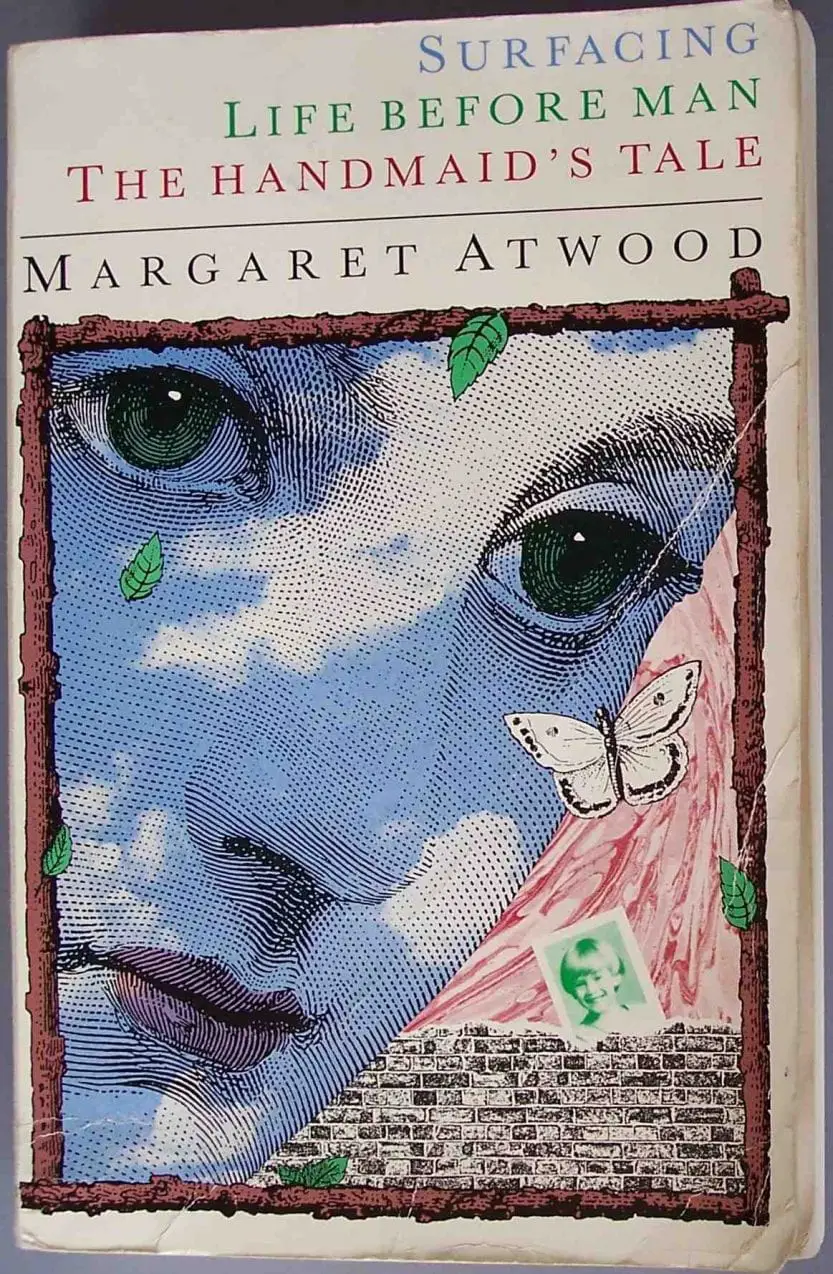Colors have several symbolic meanings in our society. Although the meaning of colors can be different in different cultures, there are overwhelmingly common connotations for some colors, across cultures and communities.
The effect of colors on our minds is equal parts psychological and cultural. We are predisposed to like certain colors, and by extension, whoever wears them. Same concept applies to the colors we associate with evil, and by extension whoever wears them. These notions have often been put to use in stories as aids to the art of storytelling.
Color symbolism in The Handmaid’s Tale
The handmaid’s tale is a good example for intelligent use of color in storytelling. The use of color in this work connected very well with the audience. In fact, the red clothes of the handmaids came to be a symbol of the movement for women’s reproductive rights in the US.
The handmaid’s tale is a dystopian fiction about women forced to be the reproductive agents of their overlords. The book by Margaret Atwood published in 1985, also became a TV series and is supposed to be set in a speculated future. It is assumed that the year is sometime around 2005. The fictional republic of Gilead has overtaken the United States of America. The society is stratified according to social class, with military being the highest. These different sections of the society are reflected in their dress codes. The series explores the nuances of the fictional society with the complex system of dress codes in place.
As with any flawed society, the women suffer the worst regardless of their class. Gilead is facing the aftermath of several radioactive chemicals and inorganic farming. The effect of the chemicals and the consequent pollution have left a large proportion of women infertile. A religious groups takes it upon themselves to impose a system that ensures a steady birth rate. This involves enslaving women and forcing them to produce the offsprings of the higher officials.
The color symbolism is the handmaid’s tale is most evident in the dress codes of the different kinds of women in Gilead. Women are considered part of the machinery and nothing more. Handmaids are just one section of the female community in Gilead. There are also wives of the powerful military officials who are mostly infertile.
The handmaids procreate for these couples who can’t have children of their own.
Women and colors in The Handmaid’s Tale
The colors worn by the women in The Handmaid’s Tale speak for them in a situation where they can’t. The women are never called by their names in Gilead. Women are considered possessions. Even the highly privileged wives are known by their husbands’ surnames. Handmaids are known by adding ‘of’ to the first names of the men in the houses they are assigned to. For example, the protagonist is named ‘Offred’ after Fred, the officer for who she is supposed to bear children.
The handmaids usually wear plain red clothes, with a white hat that has flaps on either side, preventing them from looking around them. The vivid red color of their uniform is symbolic of their status in the society as the wombs. Their whole identity is based on their ability to procreate. Red is also symbolic of the silent violence of the system, of which the handmaids are the worst impacted.
The wives dress in light shades of blue and are relatively free, at least in comparison to the other women in the society. The Aunts are incharge of training the handmaids. Their greyish brown attire reflects their colorless lives and unquestioning obedience. Their uniform resembles those of the soldiers in World War I. They are part of the oppressive system. The Marthas, who are incharge of the household chores wear dull green, probably indicating nurture and growth. They often help out the handmaidens. The Econowives, women who are married to lower ranking officials are the closest characters to a real life society. However, they are also defines by their duties to their husbands. They wear multicolored clothes, representing the many roles they fulfill.
Homosexual women, women who rebel against the system and sterile women wear dull grey. They are not considered part of Gilead. The grey in their clothes reflect neglect and insignificance.
Additionally, the fact that none of the women get to switch between these dress codes is symbolic of the fact that women do not get to aspire above their status. They are stuck with their social class for life.
Blue symbolism in The Handmaid’s Tale
A lot can be said about each of the colors in the series. In this article, we focus on the color blue and the role of blue symbolism in the series.
In the handmaid’s tale, blue is worn by the wives of the tiger ranking military officials. They are the only section of the society who can wear fashionable, fitted clothes. They also get to have a range of blue shades. These appear to be fashionable choices, but they are also symbolic of the inner conflicts of the wives. An important aspect of their clothing choices is that the color code if not chosen by women. They are drafted and enforced by men.
The Virgin Mary
Some wives wear lighter shades of blue. This is often pointed out as an ironic reference to the light blue robes of Virgin Mary. Blue symbolism has since been associated with the nurturing, maternal nature of Mother Mary. This association between the wives of the handmaid’s tale and Virgin Mary is ironic because the wives are portrayed as infertile. They enjoy the status of being the military officials’ wives, but they rarely enjoy the affections of their husbands. In the handmaid’s tale, the society is driven by the extreme rules of the old Testament. Sexual activities are supposed to entirely motivated by the end goal of procreation. As a result the system encourages the higher ranking officials to mate with the handmaids instead of their wives. Therefore Blue is also the color of failure, on the part of the wives to fulfil their traditional wifely duties.
Aristocracy
In several cultures, blue is the color of aristocracy. Japan used to have a system of color coded, stratified society. Purple and blue were inaccessible to the citizens of the lower rungs of society. Similarly, in the ancient Egyptian society blue was the color of the royals. This was due to the fact that blue was a difficult color to procure naturally. Before the Egyptian blue was synthesized, the only way to achieve a bright blue hue was from the azure stone, which was extremely expensive. As a result blue symbolism came to include connotations of royalty. The color blue is used in the handmaid’s tale only by the wives of the higher ranking officials. This indicates the gap between the different sections in the fictional society of Gilead.
Sadness
Despite the fact that the wives enjoyed a higher status than the other women in Gilead, they were probably the most restricted. This is a common situation among women of most aristocratic families. Women in the lower rungs of society are afforded more sexual and physical freedom although they are deprived of respect. The wives in the handmaid’s tale are rarely depicted as happy. They often carry a cloud of gloom, and reasonably so. They are deprived of their husbands’ affections and their social status is too precious to allow them any affairs. The handmaids and other women enjoy more sexual freedom compared to the wives. The protagonist Offred, a handmaid, is portrayed as having affairs with multiple men and a more fulfilling life, although within constraints. The blue clothes of the wives reflect their sad, unfulfilled lives- inspired from the phrase ‘feeling blue’.
The rebellious shade of blue
Serena, the wife of a higher ranking official and one of the main characters in the story, often wears teal. Teal is a rich combination of green and blue. This could be symbolic of the subtle strains of rebellion in her. Unlike other wives, she is aware of the injustices of the system. She engages in activities such as smoking which would be considered rebellious in Gilead. She is also acknowledges the blasphemous fact that her husband might be sterile, and encourages Offred to have intercourse with a chauffeur. The unusual teal shade of blue indicates the tinges of rebellion in her. However, she is not entirely different from the other wives. She is part of the oppressive system as much as any of them.
Allyship
Blue is also sometimes the color of allyship in the handmaid’s tale. One of the slightly older wives is shown to be compassionate towards a lesbian handmaid, Ofglen. She manages to keep the mating ceremony postponed by feigning sickness. The wives are generally hostile to the handmaids and often jealous of the fact that their husbands sleep with the handmaids. Offred is often mistreated by Serena, to the point of solitary confinement. But the wife at Ofglen’s place understands her plight and empathizes. On her, the teal blue almost seems like it doesn’t belong. The blue even appears softer. Interestingly, the actor who plays Ofglen has bright blue eyes that contrast with her vivid red robe. Her eyes match with the blue robes of the rich wives, bringing the absurdity of the class system to light.



